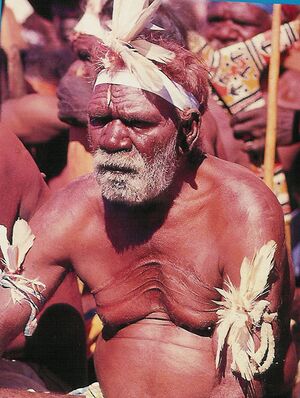Aboriginal Australian
The term Aborigine means "original inhabitant" but is now the accepted title of Australia's Native people as a whole, though they do see themselves as separate peoples with their own traditions and histories from state to state, and, in some cases, regions within each state.
At this time, it is estimated that Australia's indigenous people have resided in Australia for between 60,000 to 100,000 years and, during this time, have evolved their own body modification practices; these practices are by no means universal to all Aboriginal people.
- Subincision
- It is said that the subincision was a rite of passage among some of these peoples in respect to a totem lizard, but it is very hard to find proof of this, as not many Aboriginals will talk of their people's sacred rites. However, rumor has it that when the young men would undergo this passage, elder men of the tribe, overcome by passions, would also demand to be cut back further.
- Piercing
- Whilst not having stretched piercings as a rule, Aborigines (male or female, depending on tribe and the area where they lived) did have their septums pierced and decorated by feathers, bone, or grasses.
- Cutting
- Cutting was a mourning rite; during the time of grief, the bereaved would cut or be cut across their chests in varying degrees of depth and length, and in some cases irritate the scars furth by undergoing sand or ash rubbing.
- Amputation
- Some women had the little finger of the left hand amputated at the second joint during infancy.
Notes
The term aborigine is now seen by some to be a racist term. The term used today by most academics is Aboriginal Australian.
See also the entries about New Zealand to the south east, Indonesia to the north west, and New Guinea to the north, as well as the entry on James Cook, who "discovered" the "new" territory.
